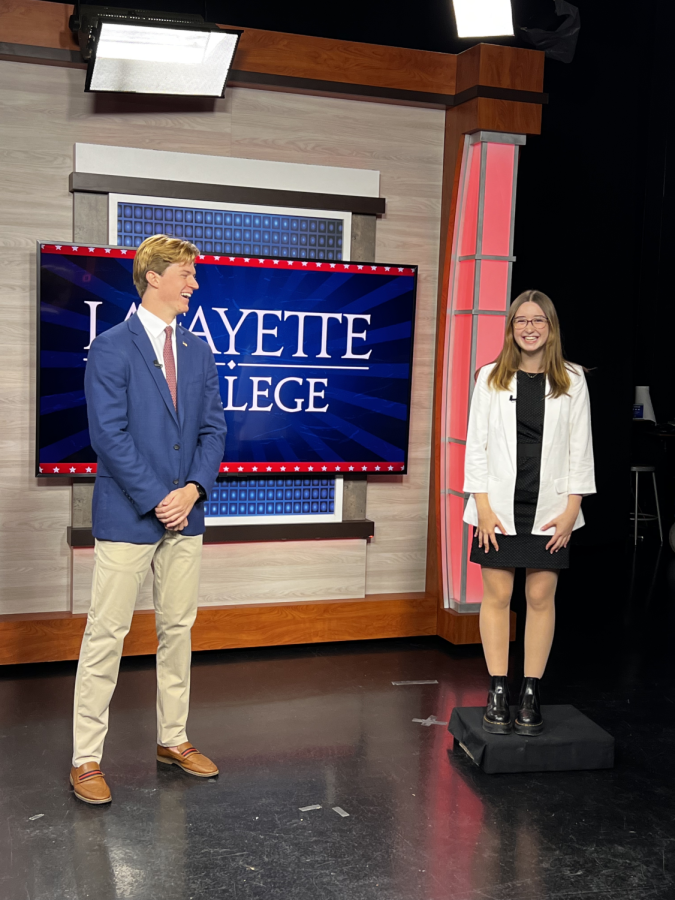Lafayette’s policy studies program partnered with PBS39 once again for their annual Lafayette Lens broadcast, which is aired to a local audience and consists of four half-hour episodes that students created about political topics.
This year, students from introductory and seminar-level policy studies classes created five-minute video essays about anything related to youth and the upcoming midterm elections.
According to Mark Crain, the chair of Policy Studies, the program has had a partnership with PBS39 since about 2010. In election years such as this one, the students in the program work on broadcasts that cover the election. In other years, the episodes deal with broader political topics.
“We came up with the idea of doing these news magazines – 30-minute broadcasts that we branded as ‘Lafayette Lens’ … Every two years we’ve also been doing an election show,” Crain said.
Crain added that this assignment allows students to develop skills that they otherwise wouldn’t be able to. He said that the ability to convey relevant information visually is becoming increasingly important in the digital age.
“I like to call it learning by broadcasting … It’s learning how to communicate through the visual media,” Crain said. “There’s a performance aspect because PBS39 has over three million households that it hits. And I think that that excites students.”
Magdalen Larsen ‘23, a student in Crain’s capstone course, hosted a segment related to youth voter turnout. She spoke to current students engaged in Lafayette Votes!, a coalition on campus that encourages students to vote, as well as to Angelique Hinton, the executive director of the non-partisan organization PA Youth Vote.
“It was fascinating to see the behind-the-scenes, especially when we had the opportunity to go into the studio to host the segments,” Larsen said. “They treated us seriously and treated our work seriously and gave us all the opportunities that they have at PBS as well. While the process was completely new, we had support throughout the whole time and it was really fun to see what that side looks like.”
Two producers from PBS attended the classes and worked directly with the students on their ideas. Crain said that they were particularly helpful in allowing the students to talk through potential challenges.
“How do you make something interesting where somebody’s not going to just change the channel and still have depth? But that’s where our partnership with PBS becomes important,” Crain said. “Not only are they airing the broadcast – they’re working with us from the very beginning and we’ve had a tremendous partnership with them.”
Echoing Crain, Larsen said that the producers taught them a lot about how to create visual media pieces.
“We have two producers … who really walked us through the process of brainstorming what issues were more riveting to viewers,” Larson said. “So we definitely had a lot of guidance from Professor Crain and the producer … and then from there we had to kind of create our own stories.”
Colin O’Shea ‘25, who is in Crain’s introductory class and worked with Emma Alessi ’25 on a segment about student faith in government, said that working directly with PBS made the assignment seem much more serious than a typical school project.
“It was kind of a weird feeling because, at a certain point, it stopped feeling like homework, and felt almost like a job because we were dealing with professionals,” O’Shea said. “It was a very cool project and I was really excited to do it.”
Aside from the students in the class, many other Lafayette community members – over 125 students, according to Crain – ended up participating in the broadcast.
“It’s like a team of teams,” Crain said. “We worked with the college, Lafayette Votes!, with the College Republicans, College Democrats and more.”
Crain said that Lafayette Lens has gotten impressive ratings due to the large audience that PBS39 appeals to.
“Oftentimes PBS doesn’t appeal to a certain demographic. It’s young kids or parents with young kids or older people who are watching,” Crain said. “But we get a pretty good across-the-board demographic watching the shows.”
Crain said that this year’s broadcast was one of the best yet.
“We’ve gotten better at … the level of complexity of the stories,” he said. “It’s improved this time better than I’ve ever seen it before.”
You can watch archived episodes of the Lafayette Lens broadcasts at video.wlvt.org.























































































































